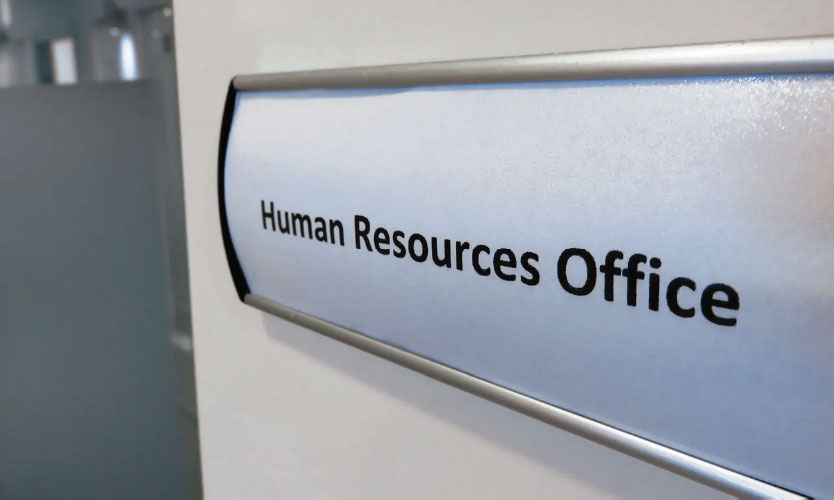HR seen as potential glue in claims process
- August 10, 2025
- Posted by: Web workers
- Category: Workers Comp

As the workers compensation industry increasingly embraces concepts such as advocacy and treating the unique needs of injured workers, human resources managers can help case managers bridge the gap between the impersonal side of comp and the more empathetic, experts say.
While privacy concerns must be carefully managed, greater collaboration between HR and workers comp personnel can aid return-to-work strategies and reduce costs, they say.
“The work needs to be done long before the injury happens for employers to build a culture of trust and support that’s going to ultimately drive better outcomes when we do experience a work illness or injury,” said Karen Thomas, Jeffersonton, Virginia-based vice president of Clinical Solutions at CorVel Corp.
Human resources, whose job is to know the staff at an organization and maintain compliance with state and federal laws, often has more detailed information on workers’ circumstances, experts say.
Departments within an organization, though, often operate independently and experts say that costs companies money in the form of workplace injuries and prolonged workers comp claims.
“Organizations exist often as a series of silos, and they have deep expertise in each area; those functions have their own responsibilities to the business, and they’re responding to their unique business demands,” said Greg Rodway, Boston-based senior vice president of consulting solutions for Marsh Advisory, a division of Marsh LLC.
The “issue of integration has been on people’s minds for a very long time,” he said.

Deb Weigand, Troy, Michigan-based managing director at Aon Global Risk Consulting, studies so-called operational friction within companies, focusing on the lack of coordination and understanding of objectives, and how that can affect workers comp’s ultimate goal of return to work and claims closure for injured workers.
Weighing the goals and interests of a company’s risk manager, claims manager, human resources department, operations team, and claims administrators against workers comp metrics, Ms. Weigand says there is no one objective “that everybody is chasing.”
HR’s job is “to get full pictures of our employees,” said Victoria Gonzales, Beaverton, Oregon-based vice president of human resources at Tristar Insurance Group, who spoke on the issue at the Workers’ Compensation Educational Conference in Orlando, Florida, in August.
“HR can be helpful in providing a full picture of a claimant: the work environment, the work group, coworkers, job descriptions,” which can improve return-to-work scenarios, she said.
Heather Barnes, Syracuse, New York-based senior claims manager, Liberty Mutual Insurance Co., who also spoke at WCI, said that improving collaboration can help with investigating claims.
“How many times have I sat in on a claim review with a customer, and we finally have all of the parties at the table, and we present a claim, and we find out information that we probably should have known about a year or two ago at the beginning of the claim?” she said.
There are some roadblocks to integration, such as privacy concerns, according to experts who say those managing human resources often face a different set of compliance issues than the department managing workers compensation claims.
It’s challenging for companies to rethink how they manage their departments, especially when considering what is required to comply with Equal Employment Opportunity Commission parameters, the Americans with Disabilities Act and the Health Insurance Portability and Accountability Act, said Kimberly George, Chicago-based global chief brand officer at Sedgwick Claims Management Services Inc.
“Creating a project like this that might literally change who’s doing what and how can be very scary,” Ms. George said. “Anytime you change anything, it comes with risk, and they maybe feel like they have solid relationships for each of those people at the company that own what they do.”
Regarding integration, risk management can help provide a “concierge” service to connect departments better, said Jeff Sickles, Berkeley Heights, New Jersey-based chief claims officer at Broadspire Services Inc., the third-party administration business of Crawford & Co.
“There’s got to be somebody within that risk management department that is that concierge saying, ‘I’m here for you whatever you need. I’m going to make sure you get it.’ That’s really what they need to do.”
Employee wellness programs linked to positive workers comp outcomes
Robust employee wellness programs can improve workers compensation claim outcomes, according to experts.
Increasingly, human resources professionals are called on to assist with comp claims, particularly mental health-related claims through the use of employee assistance programs, said Carmen Penney, Collegedale, Tennessee-based manager of workers compensation for the transportation company US Xpress Inc., who spoke at the Workers’ Compensation Educational Conference in Orlando, Florida, in August.
“In my role, I’m dealing with a truck driver on a terrible day. They may have been in a motor vehicle accident and there could have been catastrophic things happened,” she said. “And, so, for us, a lot of times it is the EAP (that provides) somebody that is just there and can listen and help that person.”
Wellness programs that provide mental health services have proven essential for Rivian Automotive Inc., with “direct” impacts on workers comp, said Marsha Wood, Chattanooga, Tennessee-based director of Environmental, Health and Safety, Occupational Health and Medical Management at the electric vehicle manufacturer.
“Especially in the comp realm, you have employees that may be out on lost time, and they’re making less wages; their daily lives are affected financially, and they’re stressed out,” she said. “The quicker we can identify that … we can get them connected to employee programs and just some routine intervention techniques.”



